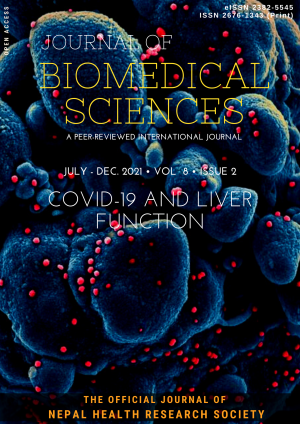Role of epidermal growth factor receptor and microbial infections in polycystic kidney disease
DOI:
https://doi.org/10.3126/jbs.v8i2.41965Keywords:
PKD, TKI, Kidney Care, EGFR, Microbiology, ScienceAbstract
Background: Autosomal Dominant Polycystic Kidney Disease (ADPKD) is a frequently inherited diseases associated with the presence of fluid-filled cysts. Epidermal Growth Factor Receptor (EGFR) plays role in cysts development
Material and methods: The following tools (PubMed, PubMed Central, Medline Search Engine, Locate and Google Scholar) were used in literature search. Key words used to search for relevant literature are: Polycystic Kidney Disease, Epidermal Growth Factor Receptor, Tyrosine Kinase Inhibitor, Renal Cyst Formation and Renal Cyst Infection. The studies beyond 10 years were not included in present study.
Analysis: The cross-examination of research papers allowed to analyse literature around role of EGFR in ADPKD pathophysiology, EGFR TKI as treatment of ADPKD and role of microbial cyst infections in disease progression.
Results: There is a small body of literature that look at EGFR, Tyrosine Kinase Inhibitor (TKI) and cyst infection in ADPKD over the last decade. The ‘crosstalk’ between Src and EGFR was observed to have an impact on cyst development and progression. Therefore, the combined treatment with different compounds can be a desirable approach in the treatment of ADPKD. There has been observed relationship between cyst infections, decrease in kidney function and PKD gene mutation. Endotoxins of Gram-negative bacteria could be involved in disease development.
Conclusion: The understanding of mechanisms of ADPKD and several cancers has led to the identification of molecular targets, and one of these is EGFR. The further study could establish the role of endotoxin in ADPKD development and its interaction with EGFR.
Downloads
Downloads
Published
How to Cite
Issue
Section
License
Copyright (c) 2021 Kamila Orzechowska, SN Muhammad, H Mokamil

This work is licensed under a Creative Commons Attribution 4.0 International License.
This license enables reusers to distribute, remix, adapt, and build upon the material in any medium or format, so long as attribution is given to the creator. The license allows for commercial use.




